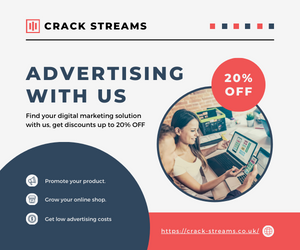Manguonmienphi means “free resources” in Vietnamese, and offers a plethora of educational tools, e-books, software, research papers, and creative assets that are available at no cost. This guide explores what “Manguonmienphi” is, where to find these resources, and how to use them effectively.
What is “Manguonmienphi”?
“Manguonmienphi” stands for free resources available on the internet. These resources span various categories including educational courses, e-books, software, research papers, and creative assets, enabling individuals to learn new skills, enhance their knowledge, and work more efficiently without incurring any costs.
Types of Free Resources
Educational Resources
Websites like Coursera, Khan Academy, and edX offer free courses in diverse subjects such as computer science, history, and mathematics. These platforms provide video lectures, assignments, and sometimes certificates.
Free E-books
Platforms like Project Gutenberg, Open Library, and Google Books provide thousands of free e-books, ranging from classic literature to academic texts.
Free Software
Several powerful free software options exist. Examples include GIMP for image editing, LibreOffice as an office suite, and Blender for 3D modeling. Here’s a comparison of free software alternatives and their paid counterparts:
| Task | Free Software | Paid Alternative |
| Image Editing | GIMP | Adobe Photoshop |
| Office Suite | LibreOffice | Microsoft Office |
| 3D Modeling | Blender | Autodesk Maya |
Research Papers
Websites like Google Scholar, ResearchGate, and PubMed provide access to thousands of free academic papers. Advanced search tips can help find the most relevant documents.
Creative Assets
Websites such as Unsplash (photos), Freepik (graphics), and Pexels (videos) offer creative resources for personal and commercial projects.
Benefits of Free Resources
- Cost Savings: Access valuable resources without spending money.
- Accessibility: Resources are available online, making them accessible from anywhere.
- Community Support: Many platforms have communities for sharing tips and collaborating.
How to Use Free Resources Effectively
Set Clear Goals
Identify what you want to achieve to stay focused and motivated.
Choose Reliable Sources
Ensure the websites you use are reputable by checking user reviews and community feedback.
Make a Schedule
Allocate specific times for learning and using resources to maintain consistency.
Join Online Communities
Participate in forums and groups related to your interests to enrich your learning experience.
Practice and Apply
Reinforce your knowledge by applying what you learn in real-life situations.
Safety and Legal Considerations
Legal Issues
Ensure the resources you access are legal to avoid infringing on intellectual property rights.
Quality of Content
Look for high-quality materials by choosing reputable sources and reading user reviews.
Community and Networking
Engaging with online communities can enhance your experience. Share tips, recommendations, and feedback to help others and improve the platform.
Conclusion
By understanding what is available and how to use these resources effectively, you can greatly enhance your personal and professional life. Stay informed, engage with communities, and explore new opportunities to maximize the benefits of these free resources.
Future Outlook
The future of free resources looks promising, with more platforms and tools becoming available. Keep an eye on new developments to make the most of the opportunities they present.
AQs on Manguonmienphi: Free Resources
1.What is Manguonmienphi?
Manguonmienphi refers to free resources available online, including educational courses, e-books, software, research papers, and creative assets.
- Where can I find free educational resources?
Websites like Coursera, Khan Academy, and edX offer free courses in various subjects.
- Are there free e-books available online?
Yes, platforms like Project Gutenberg, Open Library, and Google Books provide thousands of free e-books.
- What free software alternatives are available?
Free software options include GIMP for image editing, LibreOffice for office tasks, and Blender for 3D modeling.
- How can I access free research papers?
Websites like Google Scholar, ResearchGate, and PubMed offer access to numerous free academic papers.
- Where can I find free creative assets?
Unsplash (photos), Freepik (graphics), and Pexels (videos) offer free creative resources.
- What are the benefits of using free resources?
They provide cost savings, accessibility, variety, and community support.
- How do I ensure the quality of free resources?
Choose reputable sources, read user reviews, and verify the content’s credibility.





